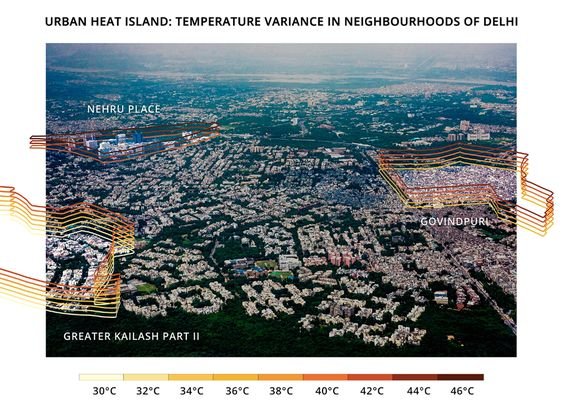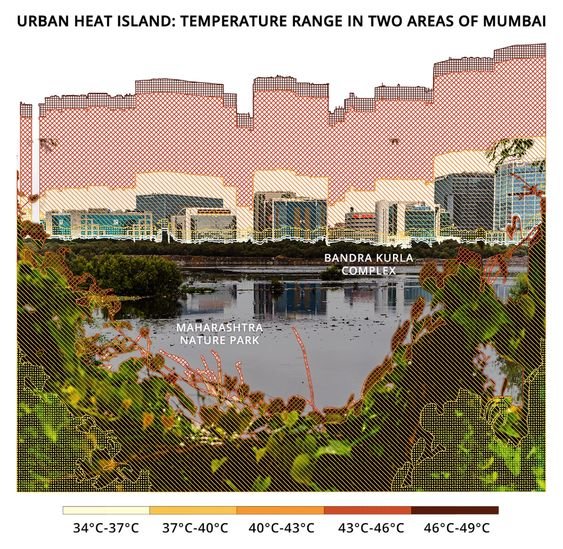We began our collaboration with Mongabay-India to enhance their stories with our spatial analysis expertise. Our shared objective to diversify environmental awareness to communicate to a larger audience continues as we embark on our second year of collaboration.
From October 2021 to June 2022, we’ve worked together to produce 30 maps and map-related/cartographic media for 23 stories in 11 different verticals by Mongabay-India. This blog documents the final set of articles we visualised together from October 2021 to June 2022.
[Illustrations] Why are temperatures within a city’s neighbourhoods different?
Urban Heat Islands in a city can have different temperatures not only between the city and its surrounding areas, but within a city itself.
We gathered data from different neighbourhoods in Mumbai and Delhi, using Landsat 8 ST_B10 band and processed the data using Google Earth Engine. Alisha Vasudev/Mongabay has illustrated the range of temperatures in a given neighbourhood for recorded minimum and maximum surface temperatures at a given time, on a regular summer day in 2022.
According to experts, India's heat action plans need to incorporate long-term measures including efforts to decrease indoor temperatures, be regularly monitored and updated, and be more proactive to decrease heat stress.
(Note: This is the fifth blog in the series, on our collaboration with Mongabay-India. Read the previous blog here, and the first in the series, here.)



